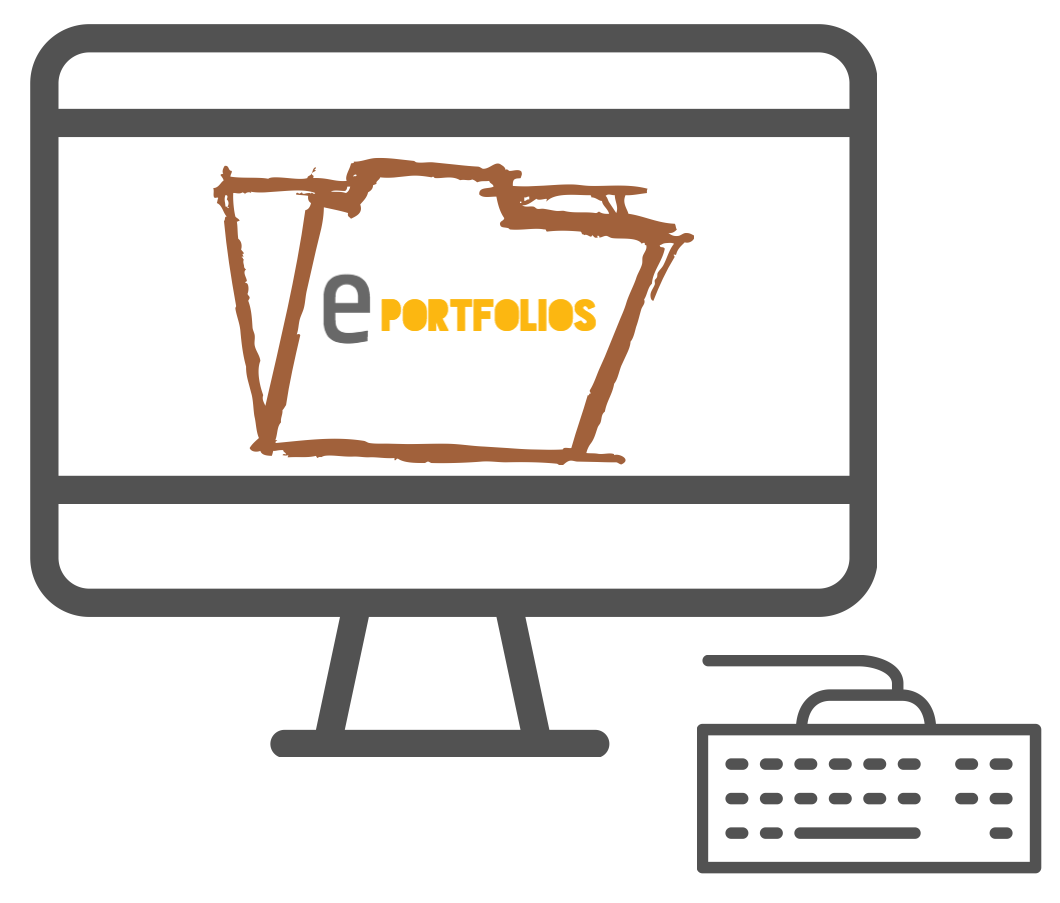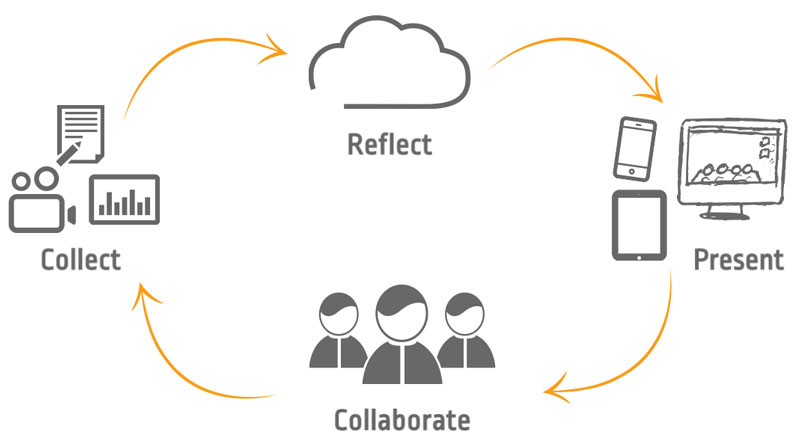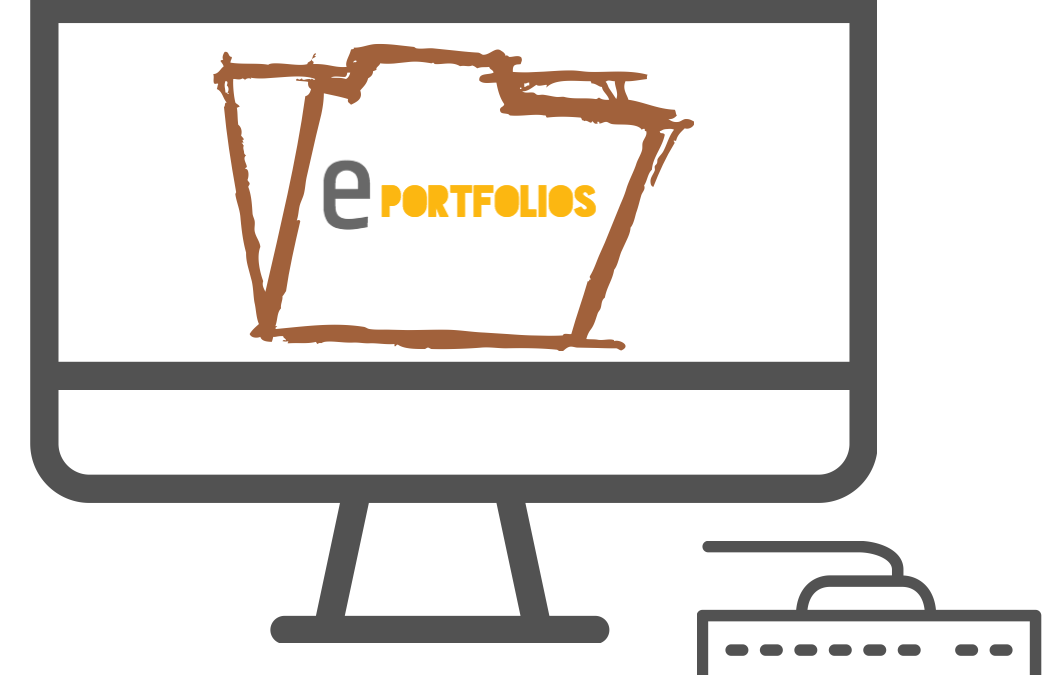
In a world where most of our students have an extremely robust online presence – mainly through social media – many of those same students would benefit greatly from some guidance on how to create a more professional presence. ePortfolios are one way to help students gain technical, literacy, and reflective skills that can help them through their academics and beyond.
An ePortfolio is a digital collection of academic work and reflection of learning. ePortfolios give students a way to document and demonstrate skills, abilities, achievements, and even creativity. Similar to a physical portfolio filled with school papers, essays, reports, projects, art work, etc., ePortfolios serve as a personalized space to share and reflect on digital artifacts collected. Artifacts can be any learning materials created by a student that demonstrate student achievement, reflection on learning, or mastery of skills. From written assignments and presentations, to digital photos and audio/video media, artifacts can be almost anything related to a student’s learning experiences.
Once students and instructors are familiar and comfortable with the technical aspects of creating an ePortfolio, the process of adding content, reflecting on learning, and sharing results becomes a collaborative, ongoing experience. It may be that students within a given class are simply using ePortfolios to gather, reflect on, and present their work to their classmates, or perhaps the ePortfolio will be part of a larger project designed to encompass the students’ entire academic career. In any case, the important components of individual reflection, collaboration between students and instructors, and the public nature of the platform are the same.

Why ePortfolios? Why not more traditional physical portfolios of academic work, or other types of projects altogether? Some of the benefits of implementing ePortfolios include new, effective ways for instructors and students alike to assess learning. Students are encouraged to not only share their work in their ePortfolios, but to add reflections about what went well, what could have gone better, and what the whole process means to them. Next, students have the chance to develop new technology skills as they learn how to create their ePortfolio with a website builder (e.g. Google Sites, Wix, Weebly, WordPress, etc.), and how to create and share digital artifacts. Finally, students are given the opportunity to redefine their “digital footprint.” While they may have a very active social presence online, this helps them develop a more professional persona that could be shared with future academic or professional endeavors.
As transformative ePortfolios can be, they are not without challenges. Both instructors and students will likely experience some discomfort as they shift from more traditional ways of interacting with and sharing assignments and projects to this collaborative and reflective experience. Discomfort may also come from the technical knowledge needed to create the website itself. Everyone has different levels of experience with technology – some students are extremely tech-savvy, while others have never even touched a computer. Another great aspect of ePortfolios is how customizable they are. Students who are new to technology can keep things very simple, while more experienced students can push the limits of the website builder and really personalize the look and feel of their ePortfolio.
Here in the Center for Academic Innovation at Chemeketa, we would encourage any faculty member to try using ePortfolios in their classes. Not only can students better synthesize the learning taking place in that given class, they may find it a useful learning strategy for them and continue the practices of reflection and collaboration in future classes. Thinking bigger picture, entire departments could adopt ePortfolios for program assessment methods that could help students stand out on their future school or job applications.
Please contact the faculty in the Center for Academic Innovation if you are interested in learning more about ePortfolios and how you might be able to implement them in your courses or program. Also, visit our podcast page (http://facultyhub.chemeketa.edu/podcast/) to hear how Chemeketa faculty member Karie Beavert utilized ePortfolios in her Effective Learning course.

